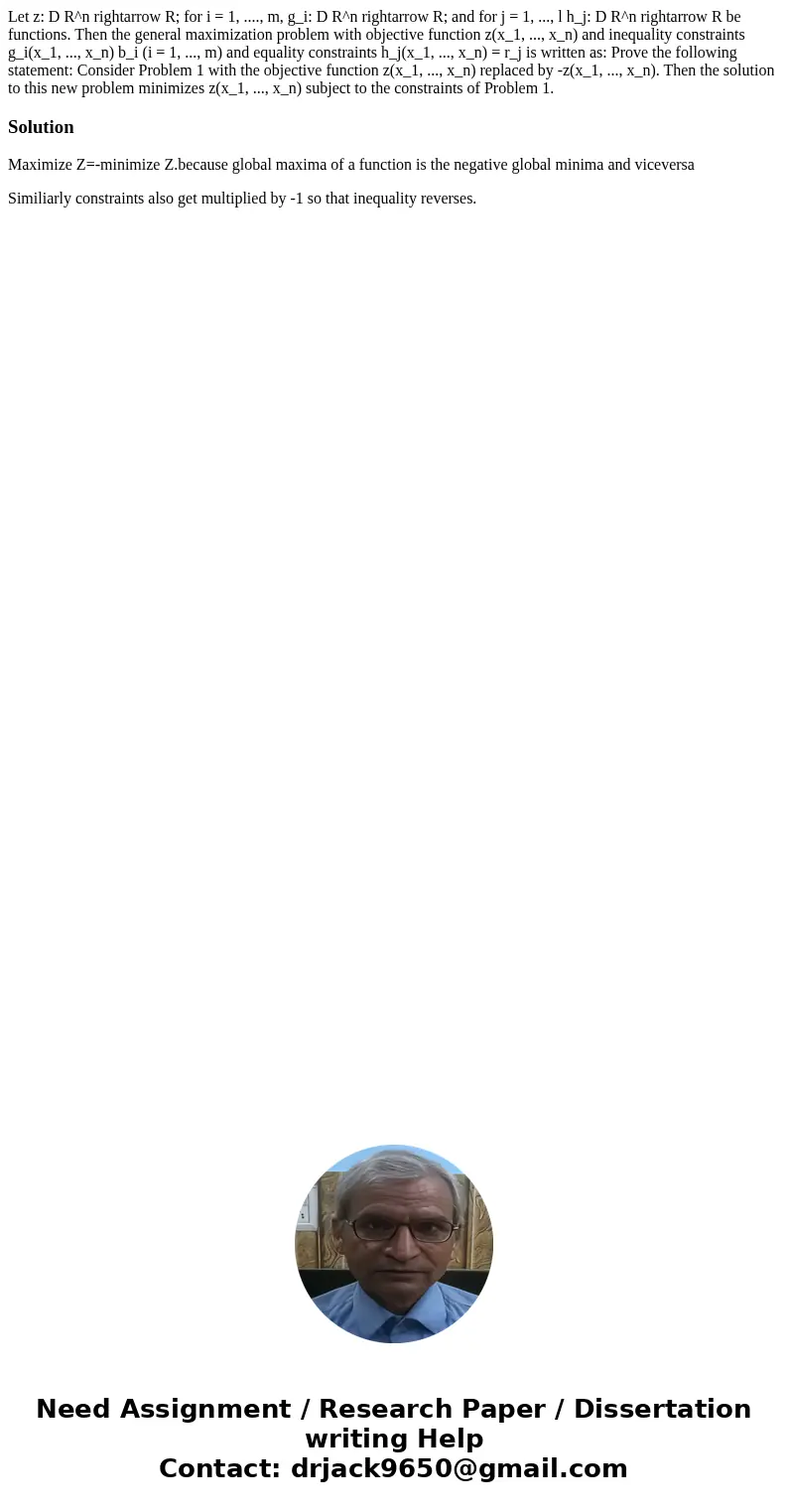Let z D Rn rightarrow R for i 1 m gi D Rn rightarrow R and
Let z: D R^n rightarrow R; for i = 1, ...., m, g_i: D R^n rightarrow R; and for j = 1, ..., l h_j: D R^n rightarrow R be functions. Then the general maximization problem with objective function z(x_1, ..., x_n) and inequality constraints g_i(x_1, ..., x_n) b_i (i = 1, ..., m) and equality constraints h_j(x_1, ..., x_n) = r_j is written as: Prove the following statement: Consider Problem 1 with the objective function z(x_1, ..., x_n) replaced by -z(x_1, ..., x_n). Then the solution to this new problem minimizes z(x_1, ..., x_n) subject to the constraints of Problem 1.
Solution
Maximize Z=-minimize Z.because global maxima of a function is the negative global minima and viceversa
Similiarly constraints also get multiplied by -1 so that inequality reverses.

 Homework Sourse
Homework Sourse